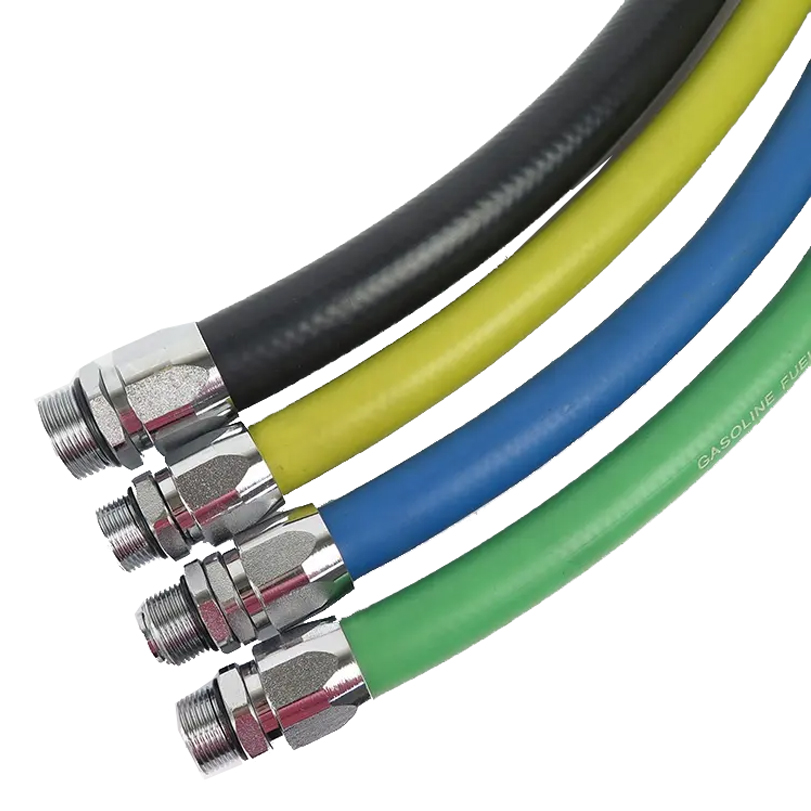335345435
ธ.ค. . 10, 2024 01:38 Back to list
Flexible Hose Solutions for Low Pressure Applications in Various Industries
Understanding Low Pressure Hoses Importance, Applications, and Maintenance
Low pressure hoses play a crucial role in various industries by facilitating the safe and efficient transport of fluids in systems where pressure levels are relatively low. These hoses are designed to handle a specific range of pressures and are vital components in applications such as irrigation, air conditioning, automotive fuel systems, and more. In this article, we will explore the characteristics of low pressure hoses, their applications, and key maintenance tips to ensure longevity and performance.
Characteristics of Low Pressure Hoses
Low pressure hoses are typically characterized by their construction materials, pressure rating, and flexibility. The most common materials used for low pressure hoses include rubber, PVC, and polyurethane. Each of these materials offers varying degrees of flexibility, chemical resistance, and durability, making them suitable for different applications.
The pressure rating of a hose indicates its maximum operational pressure. Low pressure hoses usually have a rating of less than 150 psi (pounds per square inch). This rating ensures that the hose can handle the demands of its intended use without risk of bursting or leaking under pressure.
Flexibility is also an important attribute of low pressure hoses, as it enables easier installation and routing in tight spaces. Hoses that are too rigid may be difficult to maneuver or could kink under stress, leading to reduced flow or damage to the hose itself.
Common Applications of Low Pressure Hoses
Low pressure hoses are utilized in a variety of contexts
1. Irrigation Systems In agriculture, low pressure hoses are essential for transporting water to crops. They are often used in drip irrigation systems where water needs to be delivered directly to the roots of plants without wasting resources.
2. Air Conditioning and Refrigeration In HVAC systems, low pressure hoses carry refrigerants and other fluids between components. These hoses must effectively manage the low-pressure operation of these systems while maintaining their integrity against temperature changes.
3. Fuel Delivery in Automotive Applications Low pressure hoses are used in fuel systems of various vehicles. They connect the fuel tank to the engine, ensuring a steady flow of fuel necessary for operation. Compliance with safety standards is crucial in these applications to prevent leaks that could pose fire hazards.
low pressure hose

4. Chemical Processing Many industries rely on low pressure hoses to transport various chemicals safely. The choice of material is critical to ensure compatibility with the transported substances.
5. Marine Applications Low pressure hoses are also prevalent in marine environments. They are used for fuel lines, fresh water supply, and various other systems where a reliable low-pressure flow is necessary.
Maintenance Tips for Low Pressure Hoses
To ensure that low pressure hoses perform optimally and have a prolonged lifespan, regular maintenance is required. Here are some tips
1. Routine Inspection Regularly inspect hoses for signs of wear and tear, such as cracks, kinks, or bulges. Early detection of these issues can prevent failures.
2. Correct Installation Ensure hoses are installed according to the manufacturer's specifications. Avoid sharp bends or tight fittings that could cause undue stress.
3. Clean Regularly Depending on the application, clean the hoses periodically to remove any dirt, chemicals, or debris buildup. This ensures that the flow remains unobstructed and reduces corrosion.
4. Store Properly When not in use, store hoses in a cool, dry place away from direct sunlight and extreme temperatures. This prevents degradation of the materials over time.
5. Replace When Needed Low pressure hoses have a finite lifespan. It is advisable to establish a replacement schedule based on usage and inspection findings to avoid unexpected failures.
Conclusion
Low pressure hoses are vital components in a wide array of applications that require the reliable transportation of fluids under low pressure conditions. Understanding their characteristics, applications, and how to maintain them is essential for ensuring their efficiency and safety. By prioritizing regular inspections and proper care, industries can enhance the performance and durability of these invaluable hoses, ultimately leading to smoother operations and reduced downtime.
-
SAE 100 R17 Black Smooth Cover Hydraulic Hose
NewsMar.07,2025
-
SAE 100 R17 Black Smooth Cover Hydraulic Hose
NewsMar.07,2025
-
SAE 100 R17 Black Smooth Cover Hydraulic Hose
NewsMar.07,2025
-
SAE 100 R17 Black Smooth Cover Hydraulic Hose
NewsMar.07,2025
-
SAE 100 R17 Black Smooth Cover Hydraulic Hose
NewsMar.07,2025
-
steel wire braided hydraulic hose
NewsMar.07,2025



